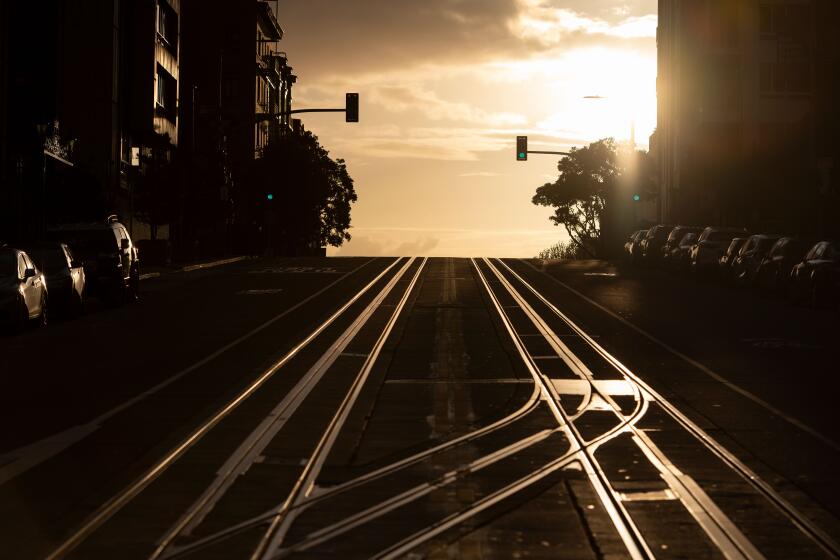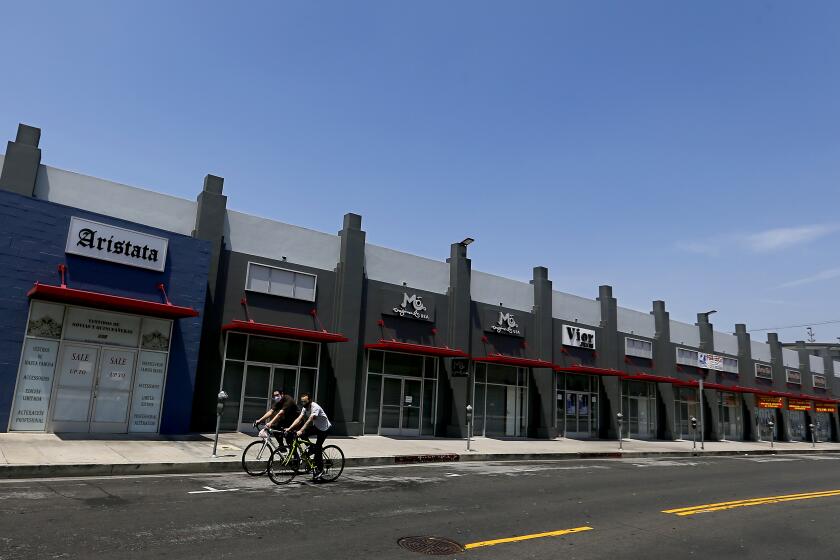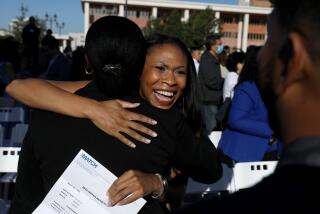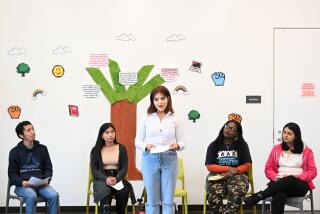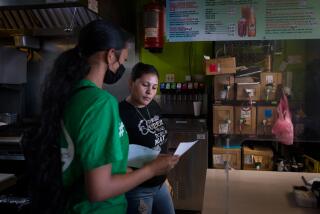Baby-sitting, dog walking, grocery runs: How some med students are helping future colleagues
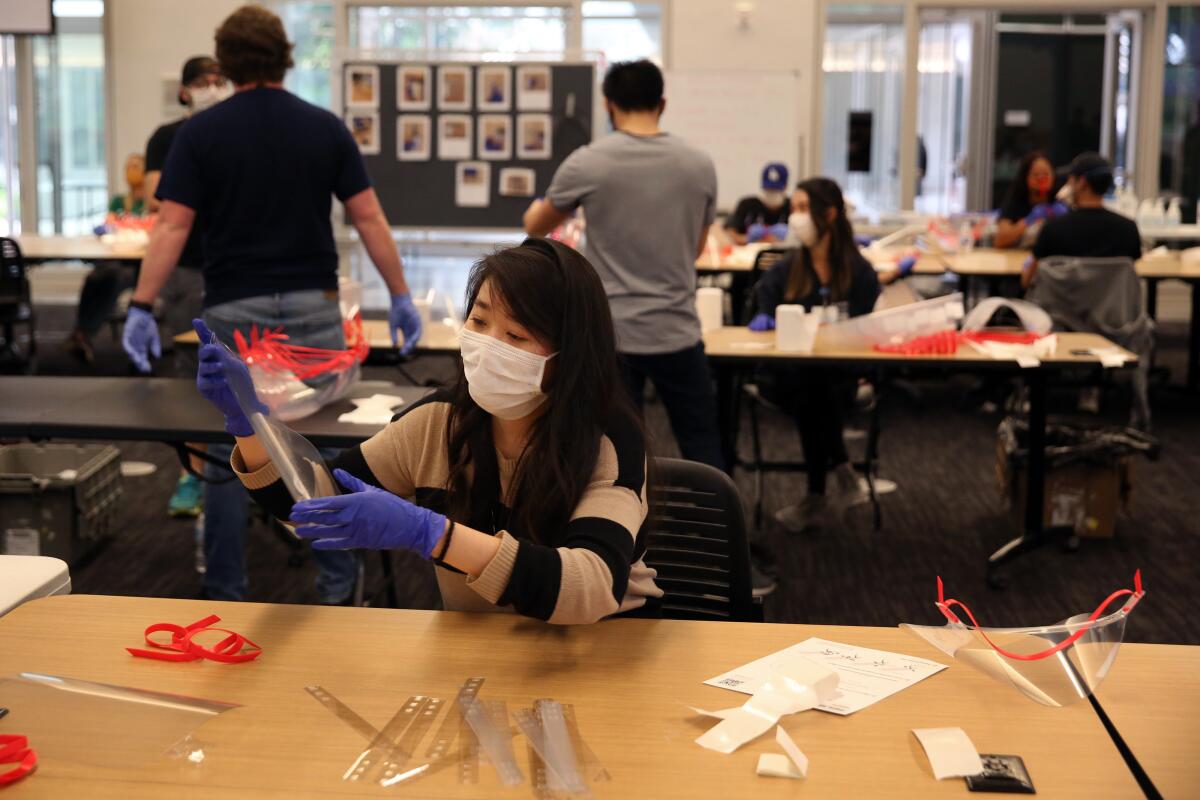
When they enrolled in medical school, baby-sitting wasn’t part of the curriculum.
But the coronavirus has upended just about everything, including the lives of young people studying to be doctors. Classes and exams have been moved online, while those who were learning in hospitals and clinics have been banned for their own safety, and to make room for doctors treating patients afflicted with COVID-19.
Sidelined during a defining moment in medical history, future doctors across the nation are scrambling to find other ways to help fight COVID-19. Hundreds are baby-sitting, dog walking, grocery shopping and picking up prescriptions for colleagues on the front lines. Others are making face masks, organizing blood drives and helping test homeless people for the virus.
“I always wondered, ‘Why is it so difficult to go to medical school? Why do they expect so much from undergrads, with all these extracurriculars ... and things outside of how well you can take a test?” said Joseph Kidane, a third-year medical student at UC San Francisco. “I’ve seen so many of my classmates come up with all of these innovative, creative ideas and solutions and be helpful and identify communities at risk during these difficult times, and now it makes sense.”
With the coronavirus hitting New York City the hardest, the pandemic is likely to change the debate over California’s efforts to build denser housing.
As governors in March began to issue stay-at-home orders to stop the rapid spread of the novel coronavirus, medical students across the country began brainstorming. Students from dozens of schools shared ideas in a chat room on Slack called “Med Students vs. COVID-19,” which now has more than 800 members discussing ways to be useful beyond patient care.
“It’s not right for us to be in the hospital right now,” said Elyse Conley, a third-year medical student at UCLA. “Frankly, we’re a waste of PPE.”
Conley and other UCLA medical students joined forces in March to begin collecting donations of protective gear, volunteering at food banks and offering child care to healthcare workers as schools and day-care facilities shuttered indefinitely.
To set up the baby-sitting program, Conley sought guidance from medical students at the University of Minnesota, who were among the first to offer such a service. Students from more than 120 schools have reached out to the Minnesota team for advice on forming similar programs, its leaders said.
UCLA’s program now provides about 700 hours of baby-sitting services weekly for children of essential workers, Conley said. The service is offered for free, but families can pay the students if they wish.
In March, Samantha Peache began panicking when she could no longer take her 8-year-old son, Jordan, to school. A single mom, Peache works as a patient navigator in UCLA’s radiation oncology department, which is busier than ever, she said.
She initially dropped off Jordan for play dates at friends’ houses, but finding parents to watch her son became more difficult as fear about COVID-19 spread.
Peache became desperate. She installed a nanny cam in her son’s room and adjusted her work schedule so she worked only mornings. She watched her son sleep in their apartment while she was at work and then tried to return home shortly after he woke up.
“I don’t have any family or any kind of other help out here in California,” she said. “It’s super frustrating — very stressful.”
Now that she has connected with the child-care program, a medical student comes to her apartment on weekdays to watch Jordan. Two students rotate shifts: One plays video games with him; another bakes and plays hide-and-seek with him. With the help of the volunteers, Peache is looking to switch her work schedule back to full-time, she said.
Usually, due to concerns about the virus, child-care programs match each family with one sitter, who doesn’t work with anyone else. Healthcare-worker parents and medical-student sitters are well aware of the risks from exposure to new people, said Hope Schwartz, a UC San Francisco medical student who oversees that university’s child-care program.
“Working with small kids, you can’t keep six feet of distance,” Schwartz said. The program encourages “a lot of hand washing — to make that an activity that they do with the kid very frequently — and things like that just to mitigate the risk as much as possible.”
Medical students across the country also have sewn cloth face coverings and held collection drives to gather N95 masks that people had in their garages and closets. At UCLA, volunteers meet regularly to build sterile face shields that are then donated to providers, said Rose Paneno, a medical student who oversees the PPE effort.
“I’m not trained to be of much help in the hospital settings, but of course sitting this out didn’t seem like a plausible option for me,” Paneno said. “I don’t know if I could’ve lived with myself if I didn’t do something.”
California officials still have a lot to do before they can meet the benchmarks that Gov. Gavin Newsom set to reopen the economy and lift restrictions on daily life.
Many medical students say the pandemic has reaffirmed their desire to work in healthcare but also has exposed cracks in the system. Inequities in access to medical care and a profit-driven healthcare system are more problematic than ever, they said.
As news of the coronavirus began to spread, Kim Lau, a first-year medical student at California Northstate University, worried about homeless encampments. Many unsheltered people are already in poor health and don’t have a way to seek medical care.
Lau formed a group of medical students who are now triaging people at homeless encampments in Sacramento County and testing them for COVID-19, as well as providing basic first aid and other healthcare to those without the infection. The team now consists of 23 medical students from Northstate as well as UC Davis.
“COVID was just kind of like the breaking point in the system,” Lau said. “Building PPE and doing child care for healthcare workers, the fact that medical students are having to volunteer to pick up these things. ... The reality is, this should not be a need.
“We’re having a lot of conversations about how this isn’t a long-term solution,” she said.
More to Read
Sign up for Essential California
The most important California stories and recommendations in your inbox every morning.
You may occasionally receive promotional content from the Los Angeles Times.
